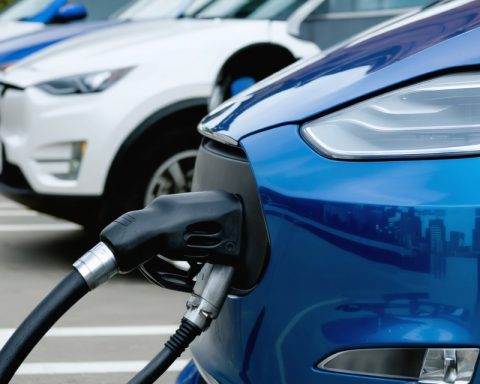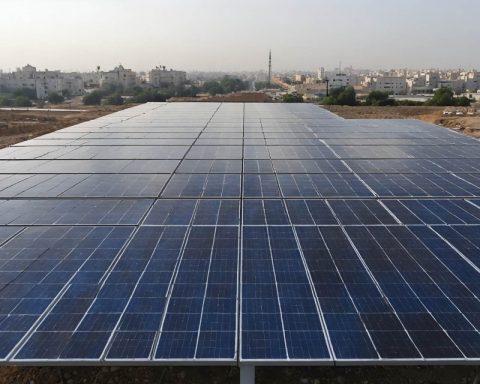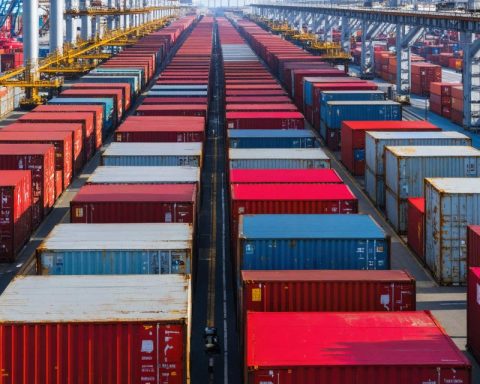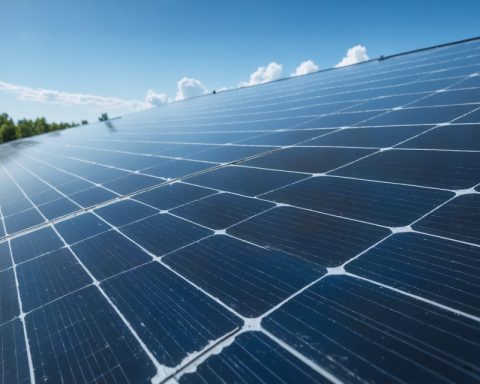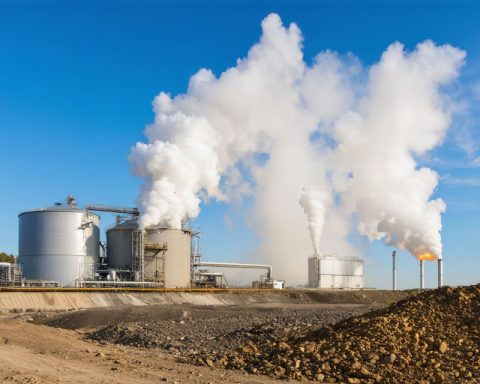- Air Liquide and TotalEnergies are investing €1 billion in the Netherlands to develop groundbreaking green hydrogen projects.
- The ‘ELYgator’ project in Rotterdam will feature a 200MW electrolyser, producing up to 23,000 tonnes of renewable hydrogen annually by 2027.
- In Zeeland, a 250MW electrolyser is slated to generate up to 30,000 tonnes of sustainable hydrogen per year, starting in 2029.
- These projects aim to reduce industrial CO2 emissions by 450,000 metric tonnes annually, targeting sectors like refining, chemicals, and heavy transportation.
- The initiatives represent a crucial step in Europe’s push for renewable hydrogen, vital for reducing reliance on fossil fuels.
- Green hydrogen is envisioned as a key driver for sustainable industrial transformation and planetary well-being.
Two corporate titans have embarked on a trailblazing mission in the Netherlands, poised to transform the industrial landscape. Armed with a hefty €1 billion investment, Air Liquide and TotalEnergies are spearheading two colossal green hydrogen projects that promise not merely to diminish but to revolutionize carbon emissions in hard-to-abate sectors.
Picture the bustling Rotterdam port—a gateway of innovation—where the ambitious ‘ELYgator’ project unfurls. This 200MW electrolyser, fed by the relentless force of offshore winds, will conjure up to 23,000 tonnes of renewable hydrogen annually by 2027. Like a giant alchemical cauldron, it will convert water into the fuel of the future.
Meanwhile, in Zeeland, another beacon of sustainable transformation prepares to rise. A 250MW electrolyser is set to generate an even larger bounty—up to 30,000 tonnes of sustainable hydrogen per year, beginning in 2029.
Together, these projects unfurl a clarion call for carbon reduction, aiming to slice industrial CO2 emissions by a staggering 450,000 metric tonnes each year. They mark a pivotal stride in Europe’s quest to scale up renewable hydrogen. This clean energy vector is crucial for unclogging the arteries of industries historically reliant on fossil fuels—such as refining, chemicals, and heavy transportation.
The vision gleams clear: a future where green hydrogen not only powers industries but also secures the planet’s well-being. Let these unfolding efforts be a testament that innovation, when coupled with purpose, can chart an uncharted course to a cleaner, greener tomorrow.
Unlocking the Future: How Green Hydrogen Projects in the Netherlands Could Transform Industries
How-To Steps & Life Hacks: Understanding Green Hydrogen Production
– Step 1: Harnessing Renewable Energy: These projects focus on using offshore wind energy to power electrolysers. Offshore wind turbines convert wind energy into electricity that is used to run electrolysers.
– Step 2: Water Splitting: Electrolysers split water molecules (H2O) into hydrogen (H2) and oxygen (O2) using electricity.
– Step 3: Hydrogen Utilization: The hydrogen produced can be stored, transported, and used across various industries, such as refining, chemical production, and heavy transportation.
For a quick life hack, individuals interested in supporting green hydrogen can look into investing in renewable energy sources or support policies that promote clean energy initiatives.
Real-World Use Cases: Green Hydrogen in Action
– Industrial Use: Green hydrogen is extensively used in chemical industries for producing ammonia and methanol.
– Transportation: It serves as a fuel for fuel cell electric vehicles (FCEVs), which are essential for reducing emissions from the transportation sector.
– Energy Storage: It can be used for large-scale energy storage and helps balance supply and demand in renewable energy grid systems.
Market Forecasts & Industry Trends
The global green hydrogen market is burgeoning, with a projected CAGR of over 50% from 2021 to 2030. (Source: International Energy Agency, IEA). Industries globally are set to invest significantly in green hydrogen to decarbonize their processes.
Reviews & Comparisons: Green Hydrogen vs. Blue Hydrogen
– Green Hydrogen: Produced using renewable energy sources without carbon emissions, making it more sustainable and environmentally friendly.
– Blue Hydrogen: While derived from natural gas with carbon capture, this method involves capturing and storing emissions but still relies on fossil fuels.
Controversies & Limitations
– Cost: Currently, green hydrogen is more expensive to produce than grey or blue hydrogen, though costs are expected to drop as technology and scale improve.
– Infrastructure: Limited refueling stations and transport infrastructures pose challenges, but ongoing investments are aiming to alleviate these issues.
Features, Specs & Pricing
– Infrastructure Scale: The Rotterdam project will feature a 200MW electrolyser, while the Zeeland site will deploy a 250MW unit.
– Output Capacity: Together, they are expected to produce up to 53,000 tonnes of renewable hydrogen annually by the year 2029.
Security & Sustainability
Green hydrogen not only reduces dependence on fossil fuels but also enhances energy security by localizing energy production and reducing geopolitical risks associated with fossil fuel imports.
Insights & Predictions
The trajectory suggests that by 2030, green hydrogen could become more cost-competitive, driving wider adoption in various industries and households.
Tutorials & Compatibility
Those interested in educational tutorials can look at resources provided by organizations such as the IEA or the EU Hydrogen Strategy documents which offer insights into the workings and potential applications of green hydrogen.
Pros & Cons Overview
– Pros: Zero emissions, renewable, enhances energy security, industry decarbonization.
– Cons: High initial costs, infrastructure limitations, large energy requirements for production.
Actionable Recommendations
– Stay Informed: Individuals can keep abreast of developments in green hydrogen technology and policies, which affect market opportunities.
– Advocacy: Support initiatives and policies that prioritize the development of green hydrogen infrastructure.
– Investment Consideration: Consider investing in companies and technologies focused on renewable resources and green hydrogen.
For more information about decarbonization projects and green hydrogen, visit the websites of leading organizations like Air Liquide and Total Energies.

